Disclosure: This article contains affiliate links. We may earn a commission from purchases at no extra cost to you, which helps our travel content.
Standing beneath a canopy of purple jacaranda blossoms in Pretoria's Church Square, I found myself contemplating the curious nature of capital cities. As someone who's navigated the complex layers of Tokyo, Washington D.C., and Brasília—all capitals that represent pieces of my own multicultural heritage—I've developed a fascination with these administrative centers that often hide their most intriguing features behind official facades. Pretoria (officially part of Tshwane) exemplifies this perfectly. While many business travelers rush through on government errands or corporate meetings, I've discovered that South Africa's administrative capital deserves more than just a perfunctory visit. During a recent 48-hour layover between consulting projects, I set out to explore the city beyond its political veneer, uncovering a surprising blend of historical depth, architectural beauty, and cultural vibrancy that most visitors miss entirely.
Day 1: Morning - Jacaranda City Awakens
My exploration began at dawn, when Pretoria's morning light casts a golden glow across its colonial architecture. I started at the Union Buildings, the imposing sandstone complex designed by Sir Herbert Baker that serves as the seat of South Africa's government. While its political significance is undeniable, I was more captivated by its architectural grandeur and the spectacular terraced gardens that cascade down the hillside. Arriving early allowed me to avoid both the midday heat and the tour groups, giving me space to appreciate the seamless blend of English and Cape Dutch architectural influences—a physical manifestation of South Africa's complex colonial history.
From there, I strolled down to Church Square, the historical heart of Pretoria. The square is surrounded by significant buildings including the Palace of Justice (where Nelson Mandela stood trial) and the Old Council Chambers. What struck me most was how the morning routine of the city unfolded around these monuments to history—government employees hurrying to work, street vendors setting up their colorful displays, and locals gathering at cafés.
For breakfast, I ducked into Café Ritsako near Church Square, a Black-owned establishment serving exceptional coffee sourced from across Africa. Their bobotie-filled croissants—a creative fusion of French pastry technique and traditional South African flavors—paired perfectly with my Ethiopian pour-over. The café's walls feature rotating exhibitions by local artists, offering a contemporary counterpoint to the colonial architecture outside.

💡 Pro Tips
- Visit the Union Buildings at sunrise for the best photography light and minimal crowds
- The gardens at the Union Buildings are free to enter and perfect for a morning walk
- Café Ritsako gets busy after 9am—arrive early for a peaceful breakfast
Day 1: Afternoon - Historical Immersion
After breakfast, I headed to the Voortrekker Monument, a massive granite structure commemorating the Pioneer history of South Africa. While I typically approach such nationalist monuments with a critical eye, I found the site offered a complex window into the country's historical narratives. The monument itself is an architectural marvel—its design allows a ray of sunlight to illuminate the cenotaph precisely at noon on December 16th, a date significant in Afrikaner history.
What made this visit particularly valuable was hiring a local guide who provided multiple perspectives on the monument's symbolism and historical context. As someone who navigates mixed cultural identities myself, I appreciated how my guide didn't shy away from discussing both the architectural significance and the complicated colonial legacy the monument represents.
After the monument, I made my way to the Freedom Park Heritage Site and Museum, which offers a counterbalance to the Voortrekker narrative. Built post-apartheid, this memorial celebrates South Africa's journey to democracy and honors those who sacrificed for freedom. The juxtaposition of these two sites—visible to each other across Pretoria's skyline—creates a powerful dialogue about memory, history, and reconciliation.
To document these contrasting historical narratives, I relied on my compact camera which has been my trusty companion for capturing architectural details in varying light conditions. Its pocket-sized form factor makes it ideal for unobtrusive photography in sensitive historical sites, while still delivering professional-quality images.

💡 Pro Tips
- Purchase a combined ticket for both the Voortrekker Monument and Freedom Park for a significant discount
- Hiring a guide at the Voortrekker Monument provides essential historical context
- Freedom Park has excellent views of the city—bring a wide-angle lens for photography
Day 1: Evening - Culinary Discoveries
As the African sun began its descent, I made my way to Pretoria's Hazelwood district, a revitalized neighborhood that's become the city's culinary and creative hub. Unlike the more tourist-oriented areas of Johannesburg, Hazelwood offers an authentic glimpse into contemporary South African urban life, with locals predominating at its various restaurants and shops.
I settled at The Black Bamboo, a restaurant that exemplifies South Africa's emerging fine dining scene while remaining accessibly priced. Chef Pellie Grobler's tasting menu draws on both traditional South African ingredients and global techniques—much like my own multicultural background has shaped my perspective. The standout dish was a reimagined bobotie (a Cape Malay spiced meat dish) using local game instead of beef, paired with a pinotage from a small-batch Stellenbosch winery.
What struck me most about the evening was the diverse crowd—government officials, young professionals, and a few in-the-know travelers, all sharing the same space. My dinner companions, a local architect and her historian husband whom I'd met through business connections, shared insights about Pretoria's ongoing transformation from purely administrative capital to cultural destination.
After dinner, we strolled through the neighborhood, stopping at Vintage Coffee for their legendary Amarula-spiked affogato—a delicious fusion of Italian technique and South African flavor that perfectly capped the evening. The café's outdoor seating area, illuminated by string lights and warmed by discrete heaters, created an intimate atmosphere for conversation that stretched late into the evening.

💡 Pro Tips
- Make reservations for The Black Bamboo at least a week in advance—it's popular with locals
- Request outdoor seating at Vintage Coffee to enjoy Pretoria's pleasant evening temperatures
- The tasting menu at Black Bamboo is excellent value compared to similar experiences in Johannesburg
Day 2: Morning - Market Culture
I started my second day at the Pretoria Boeremark (Farmers' Market), which operates every Saturday from early morning. Arriving at 6:30am, I joined locals navigating the hundreds of stalls selling everything from farm-fresh produce to handcrafted furniture. What distinguishes this market from tourist-oriented ones is its authenticity—it's primarily for locals, with prices and products reflecting actual South African domestic life rather than visitor expectations.
The market offered a fascinating glimpse into Pretoria's multicultural fabric. Afrikaner farmers sold biltong (dried meat) and homemade preserves alongside vendors offering traditional African crafts and textiles. I couldn't resist purchasing small bottles of locally-produced baobab oil and marula oil—natural skincare products I'd been curious about since seeing them in high-end stores in New York at ten times the price.
For breakfast, I followed the crowds to a stall selling koeksisters (twisted syrup-coated pastries) and strong boeretroos coffee. Finding a spot at one of the communal tables, I struck up a conversation with an elderly couple who'd been coming to the market for decades. They shared stories of how the market had evolved alongside South Africa itself—once strictly segregated, now a space where the country's diverse communities interact freely.
To capture the market's vibrant atmosphere and navigate its crowded pathways, I used my smartphone gimbal. This compact stabilizer has become essential for my travel videography, allowing me to create smooth tracking shots through busy markets without drawing attention or disturbing vendors. The foldable design means it fits easily in my daypack, ready whenever an interesting scene presents itself.

💡 Pro Tips
- Arrive at Boeremark before 7am for the freshest produce and to avoid crowds
- Bring cash as many vendors don't accept cards
- Look for the stall selling fresh koeksisters—they usually sell out by 9am
Day 2: Afternoon - Green Escapes
One of Pretoria's most underappreciated aspects is its abundant green spaces. While business travelers often remain confined to meeting rooms and hotels, I dedicated my final afternoon to exploring the city's natural side, beginning with the Pretoria National Botanical Garden.
Spanning 76 hectares, the garden showcases South Africa's remarkable biodiversity through carefully curated collections of native plants. The raised walkway through the savanna section offers views across the garden to the city skyline beyond, while the cycad collection—one of the largest in the world—provides a glimpse into prehistoric Africa. What impressed me most was the garden's water-wise demonstration area, showcasing indigenous plants that thrive with minimal irrigation—a thoughtful response to South Africa's recurring drought conditions.
After a couple of hours in the botanical garden, I headed to the nearby Groenkloof Nature Reserve for a short hike. As the first proclaimed game sanctuary in Africa (established in 1895), Groenkloof offers a remarkable opportunity to see wildlife within city limits. I opted for the 4km Bushbuck Trail, which winds through acacia woodland and open grassland. While hiking, I encountered zebra, impala, and a variety of birdlife—all just minutes from government buildings and embassies.
For this outdoor portion of my trip, my hiking daypack proved invaluable. Its ventilated back panel kept me comfortable in Pretoria's spring warmth, while multiple pockets organized my essentials—water, snacks, field guide, and camera gear. The integrated rain cover came in handy during a brief afternoon shower, protecting my equipment without needing to cut my hike short.

💡 Pro Tips
- Visit the Botanical Garden early afternoon when the light is best for photography
- The Botanical Garden's restaurant serves excellent light lunches featuring local ingredients
- For Groenkloof Nature Reserve, register at the main gate and carry ID—they're strict about security
Day 2: Evening - Cultural Farewell
For my final evening in Pretoria, I sought a cultural experience that would tie together the historical and contemporary threads I'd been exploring. I found it at the State Theatre, South Africa's largest performing arts complex. While many visitors to South Africa seek cultural performances in more tourist-oriented venues, the State Theatre offers productions primarily for local audiences, providing a more authentic window into South African artistic expression.
I was fortunate to secure last-minute tickets to a contemporary dance performance that fused traditional African movement with modern choreography. The production addressed South Africa's ongoing process of reconciliation and identity formation—themes that resonated deeply with my own experience navigating multiple cultural identities.
After the performance, I made my way to Capital Craft Beer Academy in the Menlo Park neighborhood. This craft beer establishment showcases South Africa's burgeoning microbrewery scene, with over 200 local and international craft beers available. I opted for a tasting flight of South African brews, including a remarkable rooibos-infused amber ale that cleverly incorporated the indigenous tea into the brewing process.
The evening provided a perfect microcosm of contemporary Pretoria—historically grounded yet forward-looking, maintaining cultural traditions while embracing global influences. As I conversed with locals at neighboring tables about everything from politics to rugby to music, I was reminded that the true value of travel lies not in checking landmarks off a list but in these moments of genuine connection across cultural boundaries.

💡 Pro Tips
- Check the State Theatre schedule online—they often have last-minute ticket availability at reduced prices
- Capital Craft's tasting flights offer the best way to sample multiple South African craft beers
- If you enjoy the performance, the Stage Door bar often has cast members stopping by after shows
Final Thoughts
As my Uber carried me away from Pretoria toward O.R. Tambo International Airport, I reflected on how this administrative capital had defied my expectations. Beyond its government buildings and embassies lies a city of remarkable depth—where colonial history and contemporary identity engage in constant dialogue, where natural beauty persists alongside urban development, and where cultural expression continues to evolve in fascinating ways. For business travelers with limited time, Pretoria offers rich rewards for those willing to venture beyond meeting rooms and hotel lobbies. The city's manageable size makes it ideal for a 48-hour exploration, while its relatively untouristed nature provides authentic experiences increasingly rare in our globalized world. As someone who has spent a lifetime navigating the spaces between cultures, I found Pretoria's own navigation of its complex identity particularly compelling—a reminder that the most interesting destinations are often those still in the process of becoming.
✨ Key Takeaways
- Pretoria offers rich cultural experiences beyond its administrative facade
- The city's historical sites present multiple perspectives on South Africa's complex past
- Local markets and neighborhoods provide authentic experiences away from tourist circuits
- Natural areas within city limits offer surprising wildlife encounters and outdoor activities
📋 Practical Information
Best Time to Visit
September-November (spring) when jacarandas bloom
Budget Estimate
$50-100 per day excluding accommodation
Recommended Duration
2-3 days
Difficulty Level
Easy









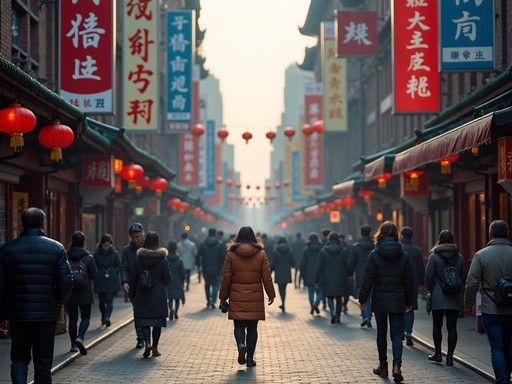
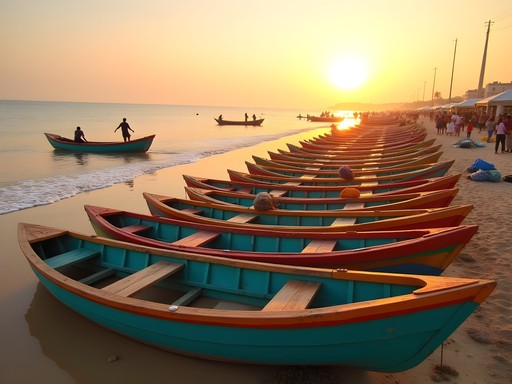


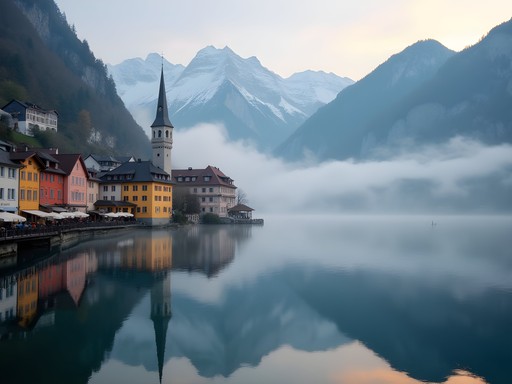
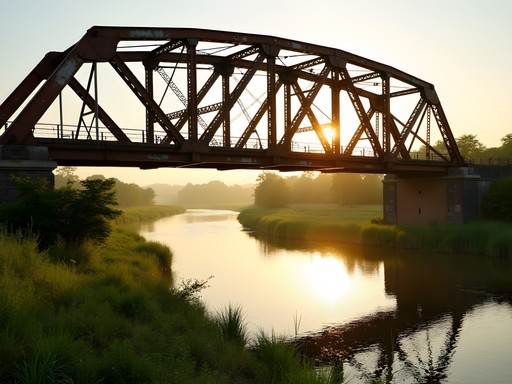
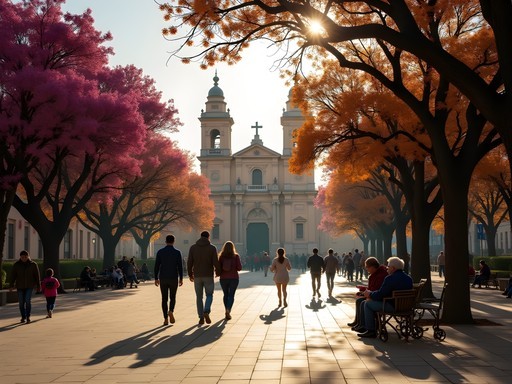
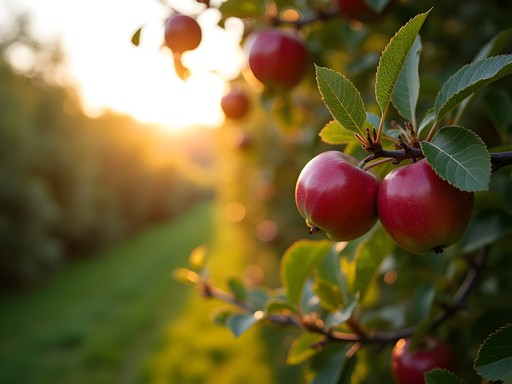
Comments
LocalYocal
If you're in Pretoria, you MUST try the food at Kream restaurant. Best steak I've had in South Africa!
Hunter Thompson
Seconding Kream! Also try Afro-boer for amazing local pastries and coffee. Their koeksisters are to die for!
Adam Nichols
Diego, this is precisely the kind of nuanced city guide I appreciate. Pretoria often gets overshadowed by Johannesburg and Cape Town, but your piece highlights why it deserves dedicated attention. I spent three weeks in South Africa last year analyzing the urban development patterns across the major cities, and Pretoria's architectural contrasts particularly stood out. The Voortrekker Monument provides such a fascinating lens into South African history. One addition I'd suggest for readers is exploring the National Botanical Garden - it offers a remarkable collection of indigenous plants and a welcome respite from urban exploration. I tracked my walking routes with my travel journal and ended up covering nearly 15km in one day just wandering through the garden and surrounding neighborhoods.
coffeeone
The botanical garden sounds amazing! Did you find public transportation easy to use there?
Adam Nichols
I primarily used Uber which was reliable and affordable. The Gautrain is excellent for traveling between Pretoria and Johannesburg, but within Pretoria itself, ride-sharing was my go-to option.
TravelMom42
How safe is Pretoria for a family with teens? Heard mixed things about safety in SA cities.
escapechamp
We felt pretty safe in the main tourist areas during daytime. Just use common sense - Uber everywhere at night, don't flash valuables. The Hatfield area near the university felt very safe with lots of students around. I used my anti-theft backpack the whole time and had zero issues.
TravelMom42
Thanks for the honest feedback! Will look into that backpack too.
coffeeone
Those jacaranda photos are absolutely stunning! Definitely adding Pretoria to my bucket list for next October.
Adam Nichols
The jacarandas are definitely worth planning your trip around! I was there last spring and the purple canopy is even more spectacular in person.
coffeeone
Thanks Adam! Any specific spots you'd recommend for the best views?
Adam Nichols
Herbert Baker Street in Groenkloof and the area around the Union Buildings were my favorites. Go early morning for the best light!
Bryce Diaz
Great post on Pretoria! I was there during jacaranda season last year and it truly transforms the city. One tip for anyone planning a visit - the Freedom Park monument you mentioned is incredible but can get hot during midday. I'd recommend going early morning and bringing plenty of water. Also, for those history buffs, I'd add the Voortrekker Monument to the itinerary - the historical frieze inside is remarkable and tells quite a story about South African history (albeit from a specific perspective). I tracked my walks with my fitness tracker and averaged about 18,000 steps daily exploring the city - comfortable walking shoes are essential!
moonphotographer
Thanks for the Voortrekker Monument tip! Was it easy to get to from the city center?
Bryce Diaz
It's a bit outside the center - about a 15-minute Uber ride. Definitely worth it though! Try to go when it's clear for amazing views from the top.
waveclimber
Your post brings back such good memories! The Hazel Food Market was one of my favorite spots too. Did you try the boerewors rolls? Absolutely incredible! I also spent time at the Pretoria Botanical Gardens which wasn't in your itinerary but would be a perfect addition for plant lovers. The indigenous sections are stunning and it's a peaceful escape from the city bustle.
moonphotographer
How safe is it to use Uber in Pretoria? I noticed you mentioned taking one to the airport. Did you use public transport at all during your stay?
waveclimber
Not the author but I was in Pretoria last year. Uber was totally fine and reliable. I used the Gautrain from the airport to Pretoria too which was super clean and efficient!
Diego Tanaka
Exactly what @waveclimber said! Uber is very reliable in Pretoria. For public transport, the Gautrain is excellent for longer distances, but within the city center I mostly walked or used Uber. Just exercise normal city precautions, especially at night.
escapechamp
Love this! Pretoria is so underrated compared to Cape Town and Joburg.
dreamclimber
When exactly is the best time to see those jacaranda trees in bloom? They look amazing in your photos!
Diego Tanaka
October to November is peak jacaranda season! If you can time your visit for late October, you'll catch them at their most vibrant. The whole city turns purple - it's quite magical.
dreamclimber
Thanks! Adding this to my spring travel plans then!
Hunter Thompson
Great post Diego! I backpacked through South Africa last year and Pretoria was such an unexpected highlight! I totally agree about the historical immersion - the Voortrekker Monument blew me away with its scale. One thing I'd add is to check out the Pretoria Botanical Gardens if you have time - it's a bit off the typical tourist path but absolutely worth it for plant lovers. The restaurant there serves amazing local dishes too. Did you get a chance to visit Freedom Park? That was another highlight for me - really puts the country's complex history into perspective.
Diego Tanaka
Thanks Hunter! I did visit the Botanical Gardens but didn't have space to include it in this guide. Agree it's fantastic! And Freedom Park was incredible - the architecture alone is worth the visit. Next time I go back I want to spend more time in the surrounding areas too.
Venture X
Premium card with 2X miles, $300 travel credit, Priority Pass